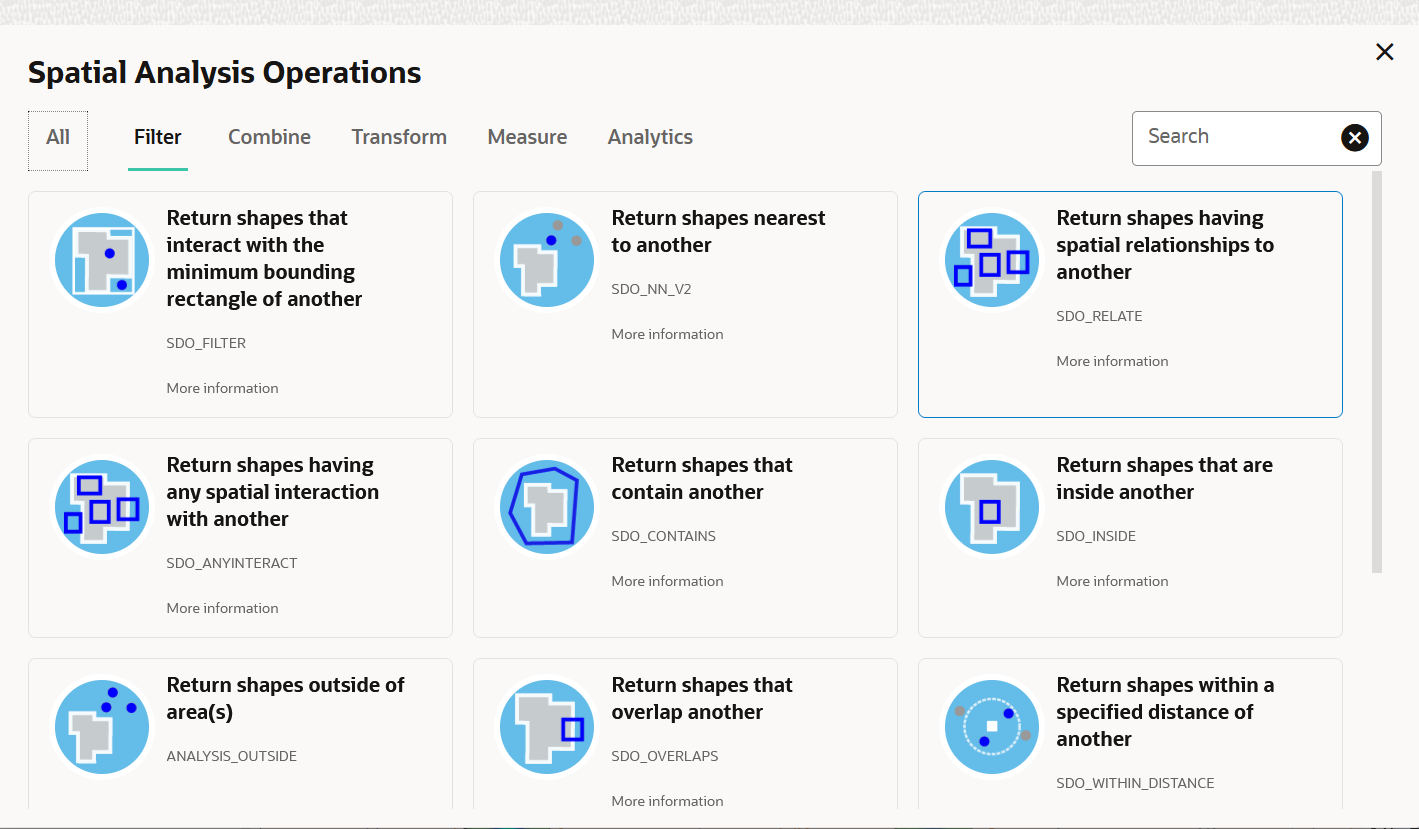5 Performing Analyses in Spatial Studio
You can perform various spatial analyses (such as filtering by proximity, nearest neighbor analysis and so on) and visualize the results in Spatial Studio.
These spatial analyses are grouped under the following categories in Spatial Studio:
- Filter
- Combine
- Transform
- Measure
- Analytics
The following topics explore a few spatial analysis operations:
- Determining the Geometries Within a Specified Distance
Using theSDO_WITHIN_DISTANCEfilter, you can filter coordinates that are within a specific distance from a point on the map layer. - Determining the Geometries Filtered By Non-Spatial Attributes
You can perform non-spatial filter analysis using a compound query. - Determining the N-Nearest Geometries
Using theSDO_NN_V2filter, you can determine the N-nearest geometries to a geometry. - Summarize By Region Analysis
Spatial Studio supports descriptive analysis where you can obtain the summary of data points (such as count, average, sum, minimum, and maximum) on a region based dataset. - Creating Lines to Connect Latitude/Longitude Pairs
The Create lines from start/end points transform operation creates a line connecting two pairs of latitude and longitude coordinates on a map layer. - Finding the Shortest and Quickest Route
Using the Driving route spatial analysis operation, you can find and store the shortest or fastest driving route between two points. - Creating an Isochrone Map for Analysis
You can create isochrone (driving-time) polygons, which show the areas that can be reached within a specified distance or time, for a set of input locations. - Densify Geometry Analysis
The Densify Geometry transform operation densifies the input geometry by adding more points based on an interval value. - Editing a Spatial Analysis
You can edit an existing spatial analysis to modify certain essential parameters.
